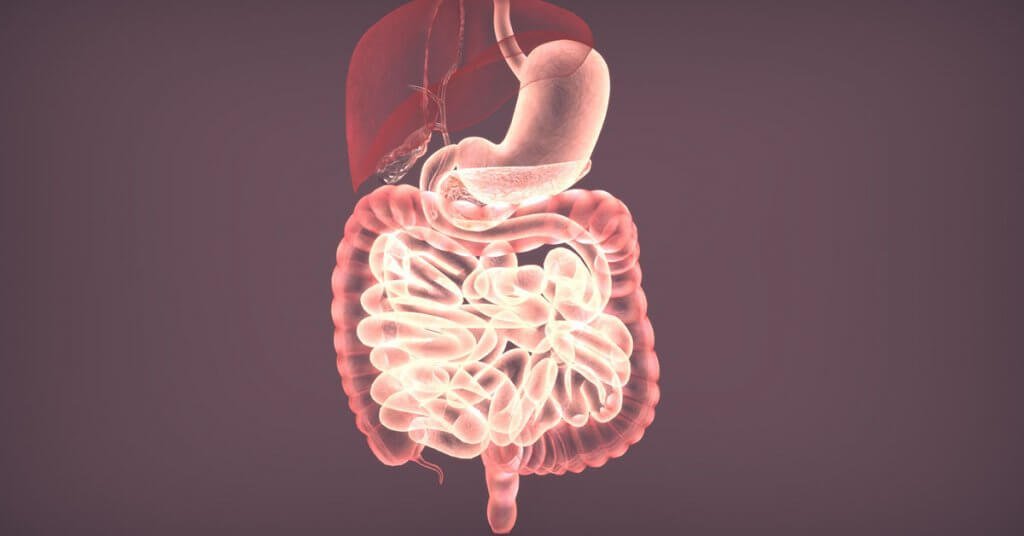What Do the Different Parts of the Digestive System Do?

According to the National Institute of Diabetes and Digestive and Kidney Diseases, between 60 and 70 million Americans suffer from digestive diseases and disorders. In order to understand these conditions, it’s good to have a working knowledge of the different components that make up the digestive system.
All of the parts of the digestive system must work together so you can properly digest and process the food you eat. There are two categories of digestive organs: those in the gastrointestinal tract, and the accessory digestive organs.
Gastrointestinal Tract
Mouth
The mouth is the first part of the gastrointestinal tract and where food enters the digestive system. There are several ways that the mouth begins the digestion process:
- Saliva is released by the salivary glands. This can be triggered before the food enters the mouth when food is smelled. Saliva contains enzymes that begin breaking down the food.
- The tongue helps with mixing the food with saliva.
- Your teeth cut and grind food to break it down into pieces that are small enough to be swallowed.
- The tongue and the soft palate in the roof of the mouth work together to help you swallow.
Pharynx
When food is swallowed it moves into the pharynx, which is a transition area of the throat above the esophagus and the larynx, commonly known as the voice box. The esophagus goes down to the stomach while the larynx connects to the windpipe (trachea). There is a flap of tissue called the epiglottis that prevents food from passing into the windpipe during swallowing. From the pharynx, swallowed food moves to the esophagus.
Esophagus
The esophagus is a muscular tube about 25 centimeters long that connects the mouth to the stomach. The muscles in the esophagus contract and relax in a process called peristalsis to push food down toward the stomach.
At the end of the esophagus is a ringlike muscle called the lower esophageal sphincter. The lower esophageal sphincter acts as a one-way valve that lets food pass into the stomach and then closes so that the contents of the stomach can not come back up. When the lower esophageal sphincter is not functioning properly, heartburn or regurgitation may occur.
Stomach
The stomach is a hollow organ that holds the food while it continues to be digested. Glands in the stomach secrete acid and enzymes to further break the food down into a form usable for nutrient absorption. The stomach muscles mix the food with the enzymes and acid until it is a processed substance called chyme. The stomach slowly empties the chyme into the small intestine.
Small Intestine
The small intestine is a muscular tube measuring about 22 feet long. The small intestine is made up of three sections:
- Duodenum: Responsible for further breaking down food and mixing it with digestive enzymes secreted by the pancreas and bile secreted by the liver.
- Jejunum: Responsible for the absorption of nutrients.
- Ileum: Responsible for the continued absorption of nutrients into the bloodstream.
When chyme enters the duodenum it is in a semi-solid state. After peristalsis has moved it through the entirety of the small intestine, it is in a liquid form. Any food residue leftover after absorption moves into the large intestine.
Large Intestine
The large intestine makes up the lower GI tract. It is a muscular tube measuring about 7 feet long. Also called the colon, it is responsible for absorbing water from the waste product passed from the small intestine. The large intestine has four parts:
- Ascending colon
- Transverse colon
- Descending colon
- Sigmoid colon
As with many digestive processes, peristalsis moves the waste product through the large intestine. As it goes through the colon, water is absorbed and it becomes more solid. Solid waste is stored in the rectum until it is released by the anal sphincter.
Accessory Digestive Organs
There are three organs that are a part of the digestive system, but not part of the gastrointestinal tract. These are called accessory digestive organs: the pancreas, liver, and gallbladder.
Pancreas
The pancreas produces and secretes digestive enzymes into the duodenum. Enzymes secreted by the pancreas break down protein, fats, and carbohydrates. The pancreas also produces insulin, the hormone responsible for metabolizing sugar.
Liver
The liver’s primary function in the digestive system is to process nutrients absorbed from the small intestine. The liver turns these nutrients into the biological chemicals needed for the body to function. It acts as a type of filter that removes toxins. It also produces a substance called bile, which is needed to digest fat.
Gallbladder
The gallbladder stores excess bile made by the liver. The liver secretes bile into the small intestine via the bile ducts. If the intestine doesn’t need bile at that time, it travels to the gallbladder. It stays there until the small intestine signals that there is food that needs to be digested. Bile also carries waste from the liver that cannot be filtered through the kidneys.
—
If you are having trouble with your digestive health, Birmingham Gastroenterology can help. We have decades of experience treating diseases and disorders of all parts of the digestive system. To make an appointment to discuss your symptoms and treatment options, call us at (205) 271-8000.

